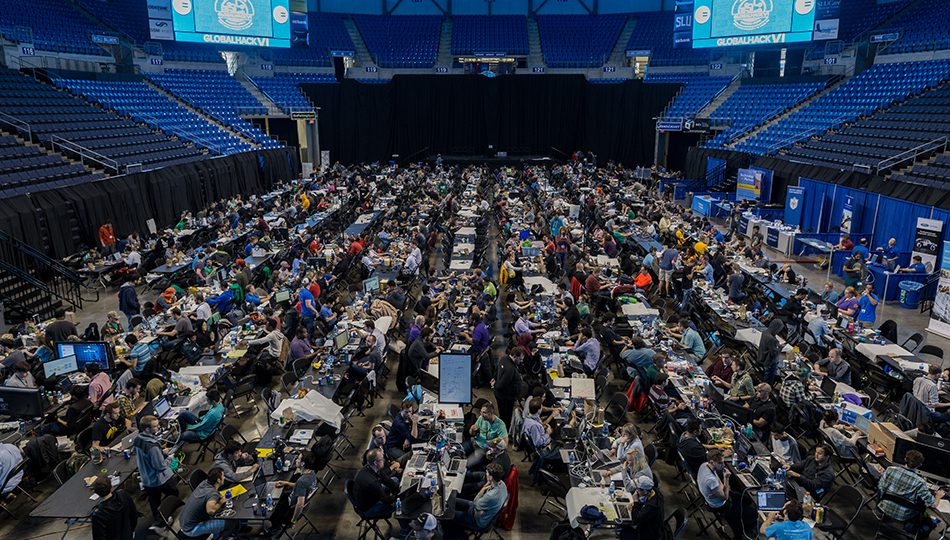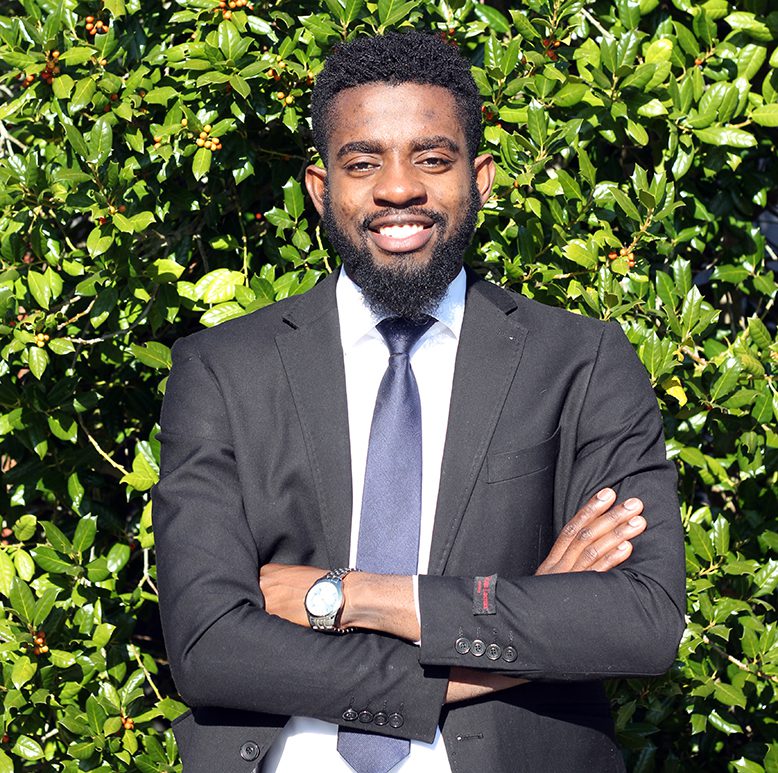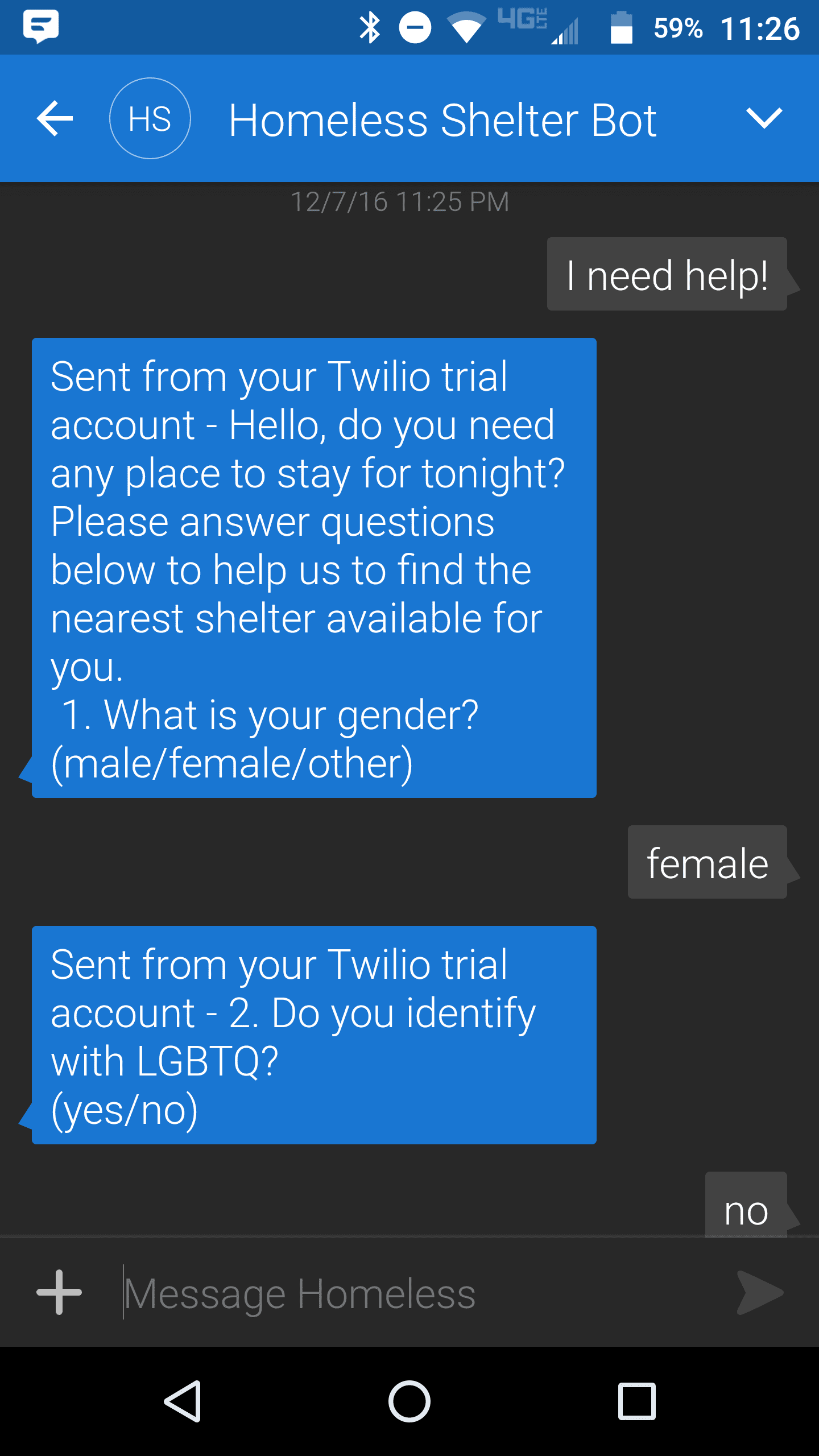Hacking Homelessness

Every night of the year, people in St. Louis, Missouri, look for places to sleep. For some, their search may mean walking miles, upon arriving only to find a shelter is full. At times, those in need of services are not able to access them. How can those homeless be helped?
A group of programming gurus from across the country recently got together for a hackathon in St. Louis to answer that question and five savvy computer science majors from Furman University—Augustus Hayfron ’17, Dakota Howard ’19, Jaeyong Kwack ’18, Hugo Lagos ’19 and James Sturges ’17—found one of the best answers.
Just what is a hackathon? A hackathon is an event in which computer programmers, graphic designers, interface designers, project managers and others collaborate on software projects, said Matt Menietti, executive director of GlobalHack in St. Louis. Launched in 2013, GlobalHack’s competitions bring together teams over a weekend to, not only build innovative software prototypes, but find solutions for real-world civic problems. Simply put, “this was a weekend to enjoy everything we love about computer science,” said Kwack of Seoul, South Korea.
Furman’s team of students finished as semi-finalists in their first-ever trip to the competition, fully funded through an external grant to the Department of Computer Science.
Hayfron, a Duke Scholar from Ghana, West Africa, talks about the team’s experience representing Furman:

Furman computer science major Augustus Hayfron ’17
The Challenge
The theme for the GlobalHack this year was hacking homelessness in St. Louis. Approximately 1,300 persons are homeless in the metro area, either living in emergency shelters or transitional housing, according to the city’s Homeless Services Division.
The city and county of St. Louis each have a Continuum of Care (CoC) set up to help people who are homeless. Each CoC is made up of a broad alliance of public and private organizations such as shelters, food banks, energy assistance programs, permanent housing providers, and government departments.
These agencies work tirelessly but may be limited by antiquated software that prevents them from sharing resources, advice, and data. For example, men and women who are homeless may walk miles to find a shelter is full, and that shelter must manually call another shelter to determine if there is an available bed. Similarly, people who are homeless must often obtain written documentation from one service provider and hand deliver it to another location to receive services.
What we built
In less than 24 hours, Dakota, Jaeyong, Hugo, James and I built a software application that linked together the organizations in St. Louis so they can more effectively and efficiently help people who are homeless in the region obtain permanent, safe, supportive, and affordable housing. The primary function of our program was to get the homeless off the street as quickly as possible.

The system takes into account the gender, sexuality, and parental status of the user to redirect them to not only the nearest shelter, but also one that best suits their needs.
We incorporated a text messaging-based user interaction system into our software. All that a homeless person in need of help has to do is to text “HELP” to a number. The program then replies back via text and asks the user a few questions. We pinpoint the exact location of the person using state-of-the-art geosynchronous technology in order to pair them with the nearest shelter. Our algorithm takes into account the gender, sexuality, and parental status of the user to redirect them to not only the nearest shelter, but also one that best suits their needs. Real-time updates show the availability of beds for the night so that a user isn’t directed to a shelter that’s already full. Our application included a client feedback form to let homeless shelters better understand what their clients want/need and an occupancy forecast for shelters to better anticipate capacity.
We also built a Homeless Management Information System (HMIS) for the homeless community. Our HMIS had a login portal which allows all the homeless shelters in St. Louis to log in with their usernames and passwords. Once logged in, a homeless shelter can check people in and out using the system. Shelter employees can also see the number of available beds in nearby homeless shelters in real time.
We also set up a data visualization system that helps leaders of the various CoC organizations determine how effective their efforts have been. It provides daily, weekly, and monthly snapshots and shows trends over time. Our system also allowed a homeless shelter within a CoC to compare their key metrics to other organizations within their CoC so they can start replicating the most successful programs and refer their clients to the most successful service providers.
Connections
We heard about the event through Computer Science Professor and Chair Kevin Treu who encouraged us to participate. Having interned with the Triune Mercy Center through Furman’s Exploration and Vocation and Ministry (EVM) program, I had first-hand knowledge of what homeless people and staff from homeless shelters went through so I saw this as an opportunity, not only to challenge myself, but to build something of significance.
What we learned
We learned a great deal about the planning and collaborative process. We learned how to communicate effectively as a group to teach each other new skills and techniques. It also opened our eyes to the severity of homelessness in our own communities.
What’s next for Furman’s project
We hope to expand our system to alert users via text of nearby soup/food kitchens, holiday gift/food giveaways for kids/families throughout the year and job opening opportunities. We’d also be interested in partnering with homeless agencies in Greenville to replicate the program locally.
A few thoughts from this year’s Hackathon partner, St. Patrick’s Center
“The software applications they created showed us that there is more than one improvement that could help us be more efficient and effective. When we’re more efficient and effective, we help more people and move closer to ending chronic homelessness,” said Laurie Phillips, CEO of St. Patrick’s Center, one of Missouri’s largest providers of housing, employment and health opportunities for people who are homeless or at risk of becoming homeless.